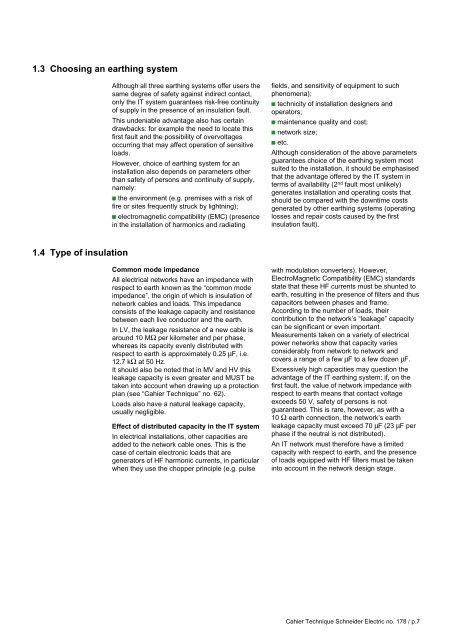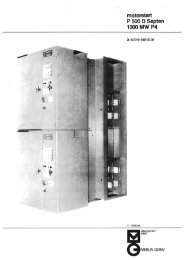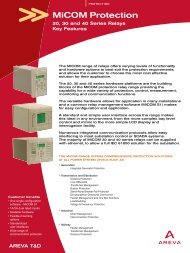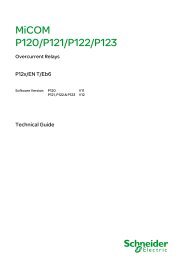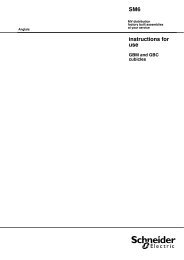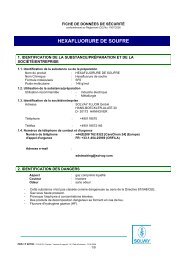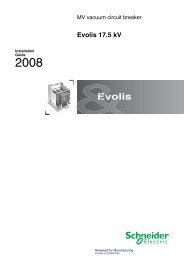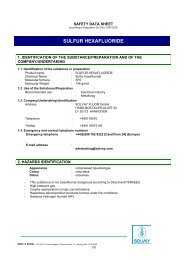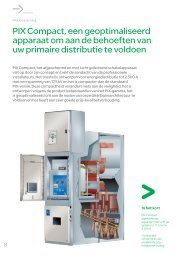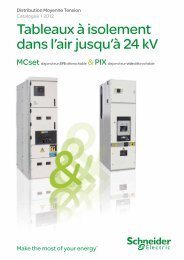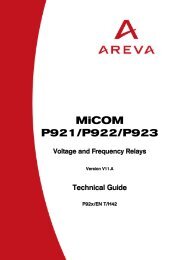The IT earthing system (unearthed neutral) in LV
The IT earthing system (unearthed neutral) in LV
The IT earthing system (unearthed neutral) in LV
You also want an ePaper? Increase the reach of your titles
YUMPU automatically turns print PDFs into web optimized ePapers that Google loves.
1.3 Choos<strong>in</strong>g an <strong>earth<strong>in</strong>g</strong> <strong>system</strong>Although all three <strong>earth<strong>in</strong>g</strong> <strong>system</strong>s offer users thesame degree of safety aga<strong>in</strong>st <strong>in</strong>direct contact,only the <strong>IT</strong> <strong>system</strong> guarantees risk-free cont<strong>in</strong>uityof supply <strong>in</strong> the presence of an <strong>in</strong>sulation fault.This undeniable advantage also has certa<strong>in</strong>drawbacks: for example the need to locate thisfirst fault and the possibility of overvoltagesoccurr<strong>in</strong>g that may affect operation of sensitiveloads.However, choice of <strong>earth<strong>in</strong>g</strong> <strong>system</strong> for an<strong>in</strong>stallation also depends on parameters otherthan safety of persons and cont<strong>in</strong>uity of supply,namely:c the environment (e.g. premises with a risk offire or sites frequently struck by lightn<strong>in</strong>g);c electromagnetic compatibility (EMC) (presence<strong>in</strong> the <strong>in</strong>stallation of harmonics and radiat<strong>in</strong>gfields, and sensitivity of equipment to suchphenomena);c technicity of <strong>in</strong>stallation designers andoperators;c ma<strong>in</strong>tenance quality and cost;c network size;c etc.Although consideration of the above parametersguarantees choice of the <strong>earth<strong>in</strong>g</strong> <strong>system</strong> mostsuited to the <strong>in</strong>stallation, it should be emphasisedthat the advantage offered by the <strong>IT</strong> <strong>system</strong> <strong>in</strong>terms of availability (2 nd fault most unlikely)generates <strong>in</strong>stallation and operat<strong>in</strong>g costs thatshould be compared with the downtime costsgenerated by other <strong>earth<strong>in</strong>g</strong> <strong>system</strong>s (operat<strong>in</strong>glosses and repair costs caused by the first<strong>in</strong>sulation fault).1.4 Type of <strong>in</strong>sulationCommon mode impedanceAll electrical networks have an impedance withrespect to earth known as the “common modeimpedance”, the orig<strong>in</strong> of which is <strong>in</strong>sulation ofnetwork cables and loads. This impedanceconsists of the leakage capacity and resistancebetween each live conductor and the earth.In <strong>LV</strong>, the leakage resistance of a new cable isaround 10 MΩ per kilometer and per phase,whereas its capacity evenly distributed withrespect to earth is approximately 0.25 µF, i.e.12.7 kΩ at 50 Hz.It should also be noted that <strong>in</strong> MV and HV thisleakage capacity is even greater and MUST betaken <strong>in</strong>to account when draw<strong>in</strong>g up a protectionplan (see “Cahier Technique” no. 62).Loads also have a natural leakage capacity,usually negligible.Effect of distributed capacity <strong>in</strong> the <strong>IT</strong> <strong>system</strong>In electrical <strong>in</strong>stallations, other capacities areadded to the network cable ones. This is thecase of certa<strong>in</strong> electronic loads that aregenerators of HF harmonic currents, <strong>in</strong> particularwhen they use the chopper pr<strong>in</strong>ciple (e.g. pulsewith modulation converters). However,ElectroMagnetic Compatibility (EMC) standardsstate that these HF currents must be shunted toearth, result<strong>in</strong>g <strong>in</strong> the presence of filters and thuscapacitors between phases and frame.Accord<strong>in</strong>g to the number of loads, theircontribution to the network’s “leakage” capacitycan be significant or even important.Measurements taken on a variety of electricalpower networks show that capacity variesconsiderably from network to network andcovers a range of a few µF to a few dozen µF.Excessively high capacities may question theadvantage of the <strong>IT</strong> <strong>earth<strong>in</strong>g</strong> <strong>system</strong>: if, on thefirst fault, the value of network impedance withrespect to earth means that contact voltageexceeds 50 V, safety of persons is notguaranteed. This is rare, however, as with a10 Ω earth connection, the network’s earthleakage capacity must exceed 70 µF (23 µF perphase if the neutral is not distributed).An <strong>IT</strong> network must therefore have a limitedcapacity with respect to earth, and the presenceof loads equipped with HF filters must be taken<strong>in</strong>to account <strong>in</strong> the network design stage.Cahier Technique Schneider Electric no. 178 / p.7


